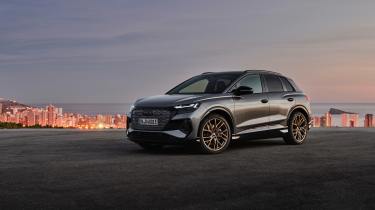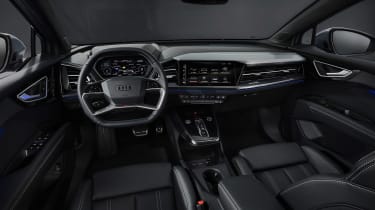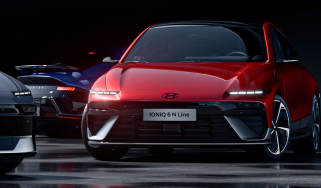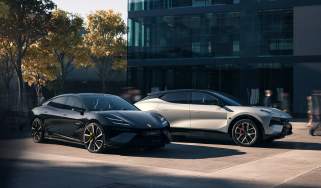Audi Q4 e-tron and Q4 e-tron Sportback – UK pricing announced
The Q4 e-tron is Audi’s adaption of the Group’s MEB platform, and it starts from £40,750
The next addition to Audi’s EV strategy arrived in April, in the form of the Q4 e-tron and Q4 e-tron Sportback – a pair of compact electric SUVs based on the same Volkswagen-designed MEB platform as the ID range. The Q4 e-tron will join the e-tron GT (on the J1 platform) and other upcoming models on a third EV architecture called PPE, creating a three-pronged approach to its EV strategy, eventually cycling out the original e-tron SUV. Prices start from £40,750, rising to £66,750 for the dual-motor Vorsprung Sportback.
As its name suggests, the Q4 e-tron is sized somewhere between Audi’s Q3 and Q5 SUVs, but features an interior bigger than both due to a comparatively long wheelbase and packaging advantages inherent in the MEB’s skateboard chassis layout. It will launch with a collection of three different motor and battery combinations, the highest specification of which is, for the moment, unique to the Q4 e-tron.
> 2021 BMW iX UK pricing announced from £69,905 – all-electric SUV ready for production
There are two battery sizes available – 52kWh and 77kWh – the former only available with a single rear-mounted motor producing a rather pedestrian 168bhp and 229lb ft of torque. This entry-level ‘35’ model takes 9sec to reach 62mph, and has a range rated at 212 miles on the WTLP cycle.
The larger battery pack is available with two motor options – the first another single motor variant with a touch more grunt at 210bhp and the same 229lb ft of torque. This ‘40’ model will do the 62mph sprint in 8.5sec, but the more relevant figure is range, which is rated at a much stronger 323 miles.
The top-level Q4 e-tron 50 quattro picks up a second motor on the front axle, making an equivalent of 295bhp, with a peak 339lb ft of torque. This more powerful variant will bring the acceleration to 62mph down to 6.2sec. Sportback models all have the same acceleration figures, but thanks to a marginally more slippery silhouette have an improved range by a few miles here and there.
Both versions fitted with the 77kWh battery are able to charge at up to 125kW, which Audi estimates will be able to add around 80 miles of charge in 10 minutes.
Given the Q4’s MEB foundation, the proportions are somewhat familiar to VW’s ID.4. The long wheelbase, cab-forward silhouette, large wheels and very short overhangs are all typical of the platform, and despite references to Audi’s quattro heritage through accentuated lines around the wheels still looks defined more by group politics than design inspiration. To combat this, Audi’s covered the exterior in layers of ornamentation, using contrasting materials, ornate lighting and even a circa 1990’s flow-through rear screen on the Sportback to distract you from it’s humdrum proportions.
The interior design goes down a similar aesthetic route to the A3 hatchback, but with the extra height in the body includes more lateral layering of materials, touchpoints and surfaces. Like the exterior, the interior is far more complex than its VW cousins, addressing one of our main criticisms of the ID.3 and ID.4.
Both body styles, and all three variants are due to reach the UK this summer, with pricing starting at £40,750 for the entry-level 35 Sport, £44,990 for the 40 and £51,370 for the dual-motor 50. High spec Edition 1 and Vorsprung trim levels are available on all versions, with the range topping out at £66,750 for the dual-motor Vorsprung Sportback.
To apply the same Volkswagen Group structure in the A3 being Audi’s version of a Golf, this is indeed Audi’s version of an ID.4, rather than an ultimate expression of Audi’s EV development. Targeting different audiences with the same hardware is something the Group has mastered since it first introduced mass platform sharing, and it’s set to continue with the Q4 e-tron.









